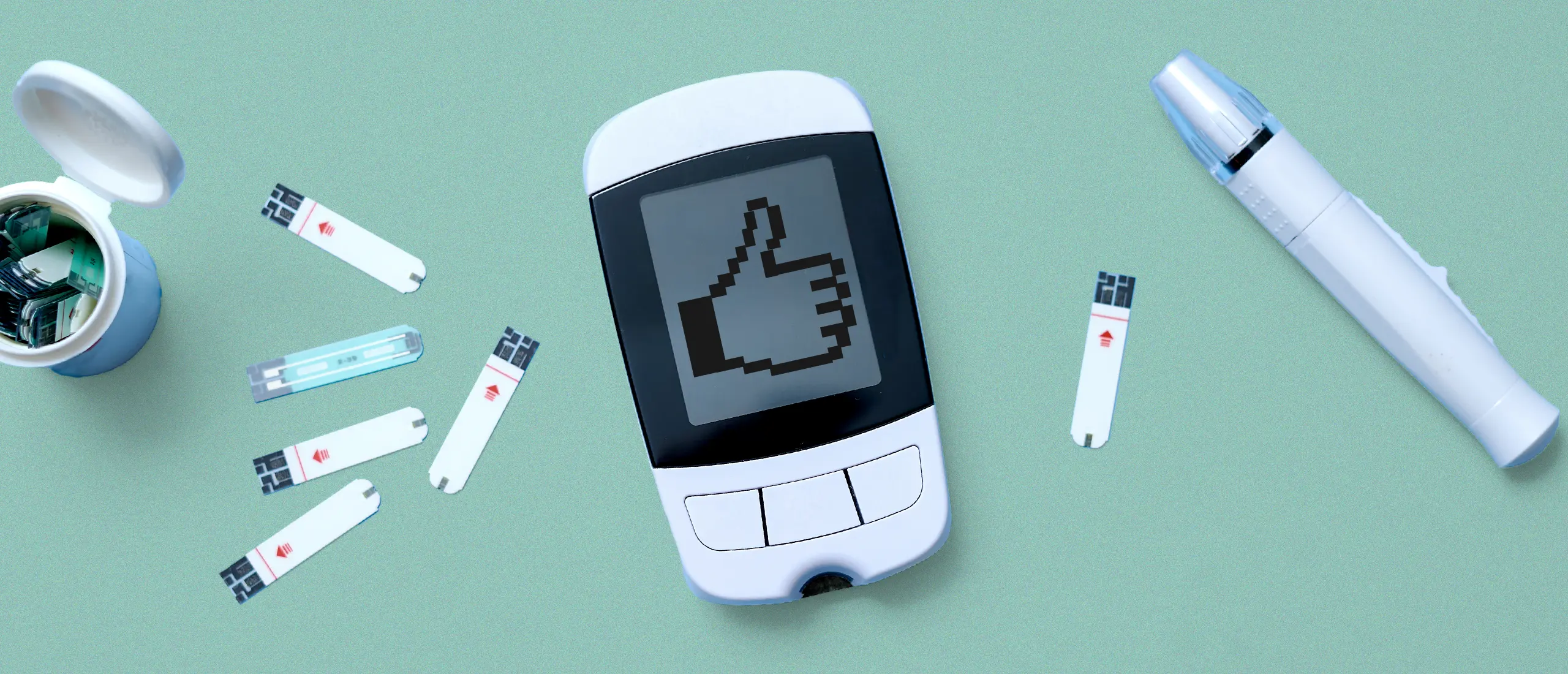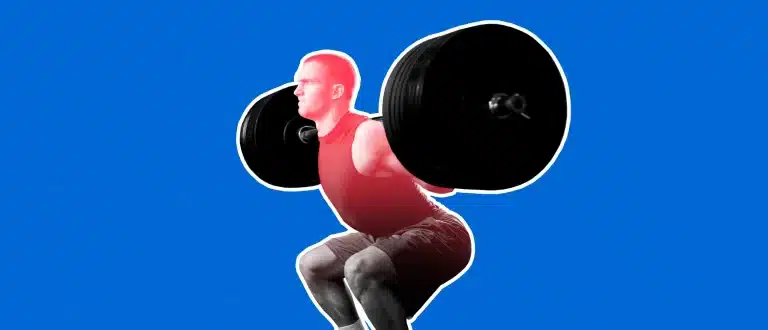10 Easy Ways to Lower Your Blood Sugar Naturally
30-Second Takeaway
- Certain health and lifestyle tweaks can help you manage your blood sugar levels naturally—and if you’re not predisposed, possibly help prevent diabetes and prediabetes.
- Adding more fiber, the right kind of carbs, and other blood sugar healthy foods can help lower blood sugar naturally.
- Exercise and stress reduction also can plan a role in keeping blood sugar low.
Blood sugar levels that creep too high aren’t too sweet—they can lead to low energy and metabolic issues like diabetes and prediabetes. While some people need medication like metformin to get their blood sugar under control, there are also ways to lower blood sugar naturally.
A brief 101: Blood sugar is the amount of glucose in your blood. And when you eat, carbs from food turn into glucose for your cells to use for energy with the help of insulin, a hormone produced by the pancreas.
High blood sugar (aka hyperglycemia) is associated with prediabetes and diabetes—which are unfortunately pretty common. The CDC estimates nearly 98 million American adults are living with prediabetes (and about 80 percent don’t even know it), and roughly 34 million have type 2 diabetes.
If your doctor brings up a medication like metformin to help manage blood sugar, have that conversation. But if you (and your healthcare provider) feel a non-drug approach is appropriate, it could be good to make it a holistic one. “A comprehensive approach that integrates a balanced diet, regular physical activity, adequate sleep, and stress management is the most effective way to manage blood sugar levels naturally,” says registered dietician nutritionist, Kelsey Costa, MS, RDN.
How to Lower Your Blood Sugar Naturally
Managing blood sugar levels is crucial for those with conditions like diabetes, but it’s also important for overall health,” says Ann Maria Hester, M.D., board-certified internist and author of Patient Empowerment 101. Here are 10 ways to lower blood sugar naturally.
About the Experts
Kelsey Costa, MS, RDN is a registered dietitian nutritionist, research consultant, certified wellness coach, and author specializing in translating evidence-based nutrition and health research into consumer-friendly content. She founded and is the CEO and senior editor at Nutrition Insights LLC.
Ann Maria Hester, M.D., is a board-certified internist with more than 30 years’ experience. She is the author of Patient Empowerment 101.
1. Watch your carb intake
No surprise here: What you eat matters when it comes to blood sugar. The good news is you don’t have to cut carbs completely.
A 2022 study published in Diabetes and Endocrinology revealed that when participants who weren’t taking glucose-lowering medication followed a low-carb diet (getting less than 45% of energy coming from carbs) for six months—they experienced beneficial glycemic effects (1). The study participants’ diets consisted of high-fiber foods and those containing unsaturated fat and protein, along with minimal refined carbohydrates.
You’ll want to cut out any sodas and sugary drinks, for example, (and while you’re at it, processed carbs), Hester says. Both can have a significant impact on blood sugar levels.
2. Eat more fiber
Fiber in foods like whole grains allows a slower release of glucose into the bloodstream and a more controlled insulin response, Costa says.
Soluble fiber in particular dissolves in water, forming a sort of gel which helps slow digestion and allows you to feel fuller, longer. Oats, apples, and avocados are all good sources.
Insoluble fiber is also beneficial, especially when it comes to blood sugar as it helps support insulin sensitivity—not to mention, keep you regular. Nuts, seeds, and bran are just a few options.
3. Exercise
When it comes to keeping blood sugar regular (or lowering it naturally), how you exercise can be just as important as how you eat.
Research published in 2023 in Nature Metabolism found that losing just 10% of body weight through a combination of exercise and a healthy diet can lead to twice the improvement in insulin resistance compared to weight loss from diet alone in people who are overweight or have pre-diabetes (2).
A combo of aerobic exercise, resistance training, and HIIT will help you keep blood sugar in check, Hester says.
Aerobic exercise: Running, swimming, cycling, and brisk walking can all increase your heart rate. “This boosts insulin sensitivity, which helps the cells better use available insulin to take up glucose during and after activity,” Hester says. “Over time, this can lead to lower blood sugar levels.”
Resistance training: Weight lifting, body-weight exercises, and Pilates are all forms of resistance training, which increases insulin sensitivity and builds muscle. And muscle uses more glucose than fat cells do. “The more muscle mass you have, the more glucose your body can use and burn for energy, thus reducing circulating blood sugar levels,” Hester adds.
HIIT: HIIT is known for fast results—and the same is true of its impact on blood sugar levels, Hester says. “The short, intense bursts of exercise followed by rest can help your body better utilize glucose,” she says.
4. Eat blood sugar-friendly foods
“Several types of foods and nutrients are particularly effective at lowering blood sugar levels due to their impact on insulin response and glucose metabolism,” Costa says.
Here’s what Costa and Hester recommend you add to your plate:
- Lean proteins: Chicken, fish, tofu, and legumes slow digestion, which also produces a slower entry of glucose into the bloodstream.
- Non-starchy vegetables: Leafy greens, broccoli, bell peppers, and zucchini won’t spike blood sugar.
- Healthy fats: Fats from avocado, nuts, seeds, and olive oil can slow the absorption of other nutrients—including carbs—which slows glucose release.
5. Hydrate
In case you need yet another reason to drink plenty of water, dehydration can also cause blood sugar spikes. “Regular water intake can help rehydrate the blood, enable the kidneys to flush out excess glucose through urine, and keep blood sugar levels within a healthy range,” Costa says.
Six to eight glasses per day has long been the standard recommendation, but it’s actually best to drink about half your bodyweight in ounces.
6. Manage stress
Another culprit for jacking up blood sugar? Stress. It can cause the body to release glucocorticoids and catecholamines—hormones which research has shown may lead to elevated blood sugar levels over time (3).
Meditation, mindfulness practices, deep breathing exercises, yoga, and tai chi can help you manage stress, Hester and Costa say.
7. Get enough sleep
Skimping on sleep can also cause blood sugar levels to spike. “Poor sleep can affect insulin sensitivity and the hormones that regulate appetite, leading to higher blood sugar levels,” Hester says.
Listening to your body is the best way to determine how much sleep you need, but you can also use a wearable like the Oura ring to help find your best personal amount of shut eye.
8. Monitor blood sugar levels
If you’d like to monitor your blood sugar, your doctor can order a A1C blood test, which shows your average blood sugar level over the prior two to three months. The Centers for Disease Control and Prevention recommends this test in adults who are over age 45 or who are under 45, overweight, and have one or more risk factors for type 2 diabetes. In addition, the CDC says a healthy A1C result would show a level below 5.7%. A level of 5.7% to 6.4% indicates prediabetes, and over 6.4% indicates diabetes.
Another option: Wear a continuous glucose monitor (CGM), a device that measures blood glucose levels in real time. Research published in Clinical Diabetes found that 87 percent of continuous glucose monitor users tweaked their food choices based on the data from the device.
10 Try intermittent fasting
Intermittent fasting (eating during prescribed hours and fasting during the rest) has been touted for its potential to help with weight loss, yet research shows it can help manage blood sugar levels, too.
A recent study of 75 participants with type 2 diabetes published in Nutrition, Obesity, and Exercise showed that those who participated in time-restricted eating (TRE) six days per week over the course of six months had an average blood sugar drop of about .91% compared to the control group (4).
References
1. Dorans, K., et al., (2022)., Effects of a Low-Carbohydrate Dietary Intervention on Hemoglobin A1c
2. Beals, J., et al., (2023)., Dietary weight loss-induced improvements in metabolic function are enhanced by exercise in people with obesity and prediabetes
3. Sharma, K., et al., (2022)., Stress-Induced Diabetes: A Review
4. Pavlou, V., et al., (2023)., Effect of Time-Restricted Eating on Weight Loss in Adults With Type 2 Diabetes


















